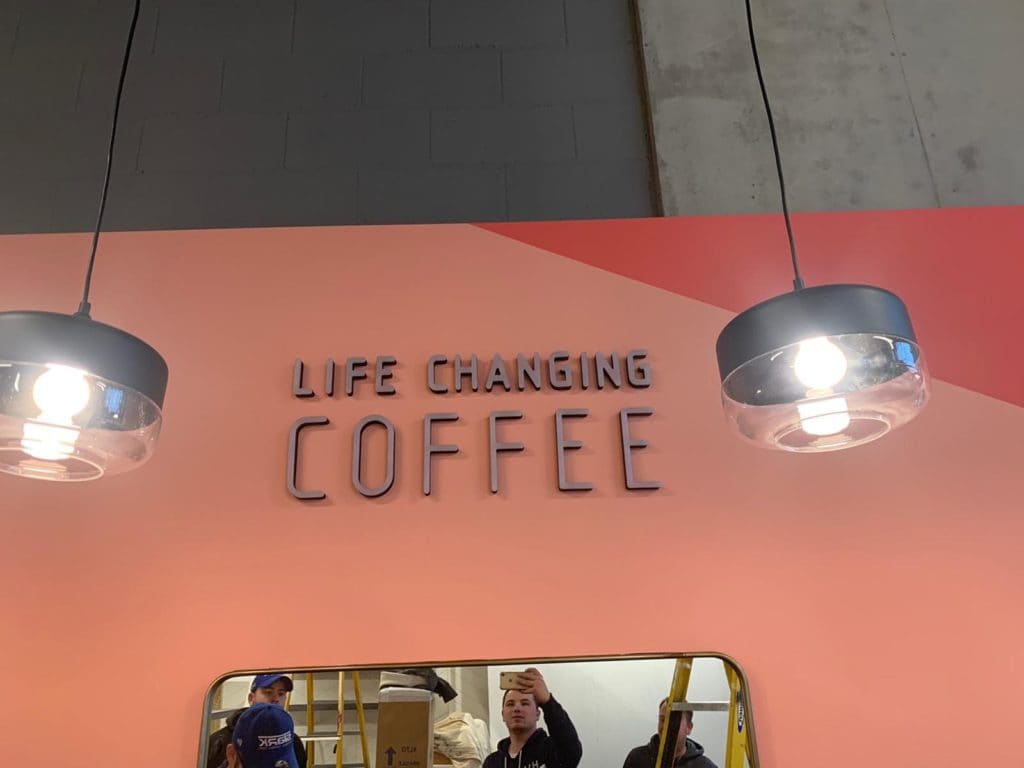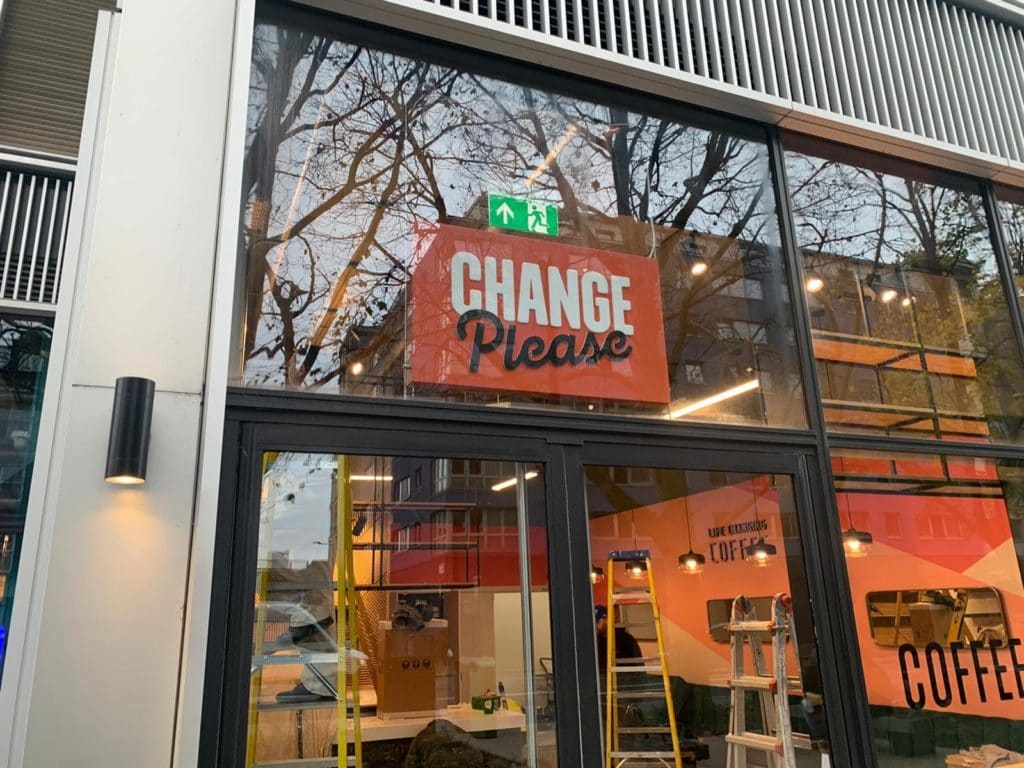Want to know more?
Please get in touch for more information about what we can do for you.
Contact UsChange Please approached Graffiti Design to create signage for the launch of a brand new coffee house in Elephant Park, Southwark, London
We were approached by the Change Please organisation to create some eye-catching “Life Changing Coffee” signage, for the launch of a brand new coffee house in a brand new building. This was to be housed in Southwark Council’s prestigious redevelopment of the Elephant & Castle urban centre in London. The job also required us to obtain planning consent for the building itself.
The Elephant & Castle locality has been a special part of London since Roman times, as a transportation hub and urban settlement. It has a vibrant history, and the regeneration project promises an exciting future for the community. Building on its past heritage, three distinct sectors of the site are intended to breathe new life into the region. The aim is to provide Londoners with jobs, high-quality new homes, green space and business opportunities.
In keeping with their business ethic, the Change Please organisation wanted to incorporate a socially beneficial coffee house into the Elephant Park regeneration project. However, the building for it didn’t yet exist! Part of our brief was to obtain the planning permission, but this was hampered by the closure of the Southwark Council Planning Department due to the pandemic.
Change Please is a social enterprise that centres around award-winning coffee. It started up in 2015 with a single cart in Covent Garden, and has since built on the ethos of “Life Changing Coffee” to help lift people out of homelessness. The organisation trains and employs homeless people to help them move forward with their lives. It dedicates 100% of its profits to ending homelessness. Attracting interest from global business partners such as Virgin Atlantic, the enterprise has spread its impact across the country. It’s now going international, with branches in Dublin, Paris and Australia.
To create the attractive and arresting “Life Changing Coffee” signage for the new coffee shop, we used a combination of acrylics, high-density polyurethane (HDPu), powder-coated aluminium, LEDs and vinyl graphics. Using these materials, we were able to produce lightweight signs with considerable impact and customer allure, while still working to a strict budget.
CNC routers and pressbrake were necessary for producing the illuminated sign tray that’s suspended over the entrance. Our vinyl cutters provided all the reverse cut window graphics. Our in-house paint plant was employed for applying the paint finishes to the sign tray and the faux neon letters. We also used CNC routers to machine the acrylic, and HDPu to create the internally-mounted faux neon lettering. This formed the centrepiece, and was perhaps the most interesting aspect of the design.
The overall time taken to produce the signs was between two and three weeks, but the whole project took much longer due to the lockdown of the Planning Office. Submitting a planning application was our greatest challenge in undertaking this design, since it was for a building that was still under construction. However, we were pleased to be able to deliver exactly what the client asked for, and within their budget and timescale.
Design
Manufacture
Survey
Installation
Router Cutting
Timber Fabrication
Vinyl Printing
Painting
Gilding


“We have worked with Graffiti Design on a number of projects over the years, and have always been delighted with the end results. So when we had to commission these specialist items, our first point of call was Graffiti Design. Following discussions with Colin, adjustments were made to allow for the siting of the solar panels; then we were ready to go. Despite placing the order at the start of lockdown, the work on the monoliths got underway, with the Graffiti team adhering to all rules and guidelines. Once our building contractors had put in place the concrete bases, Graffiti Design delivered and installed all 3 monoliths efficiently and without fuss. I would not hesitate to use Graffiti Design on future projects.”
Mike Barber – MJB Architecture
Please get in touch for more information about what we can do for you.
Contact Us